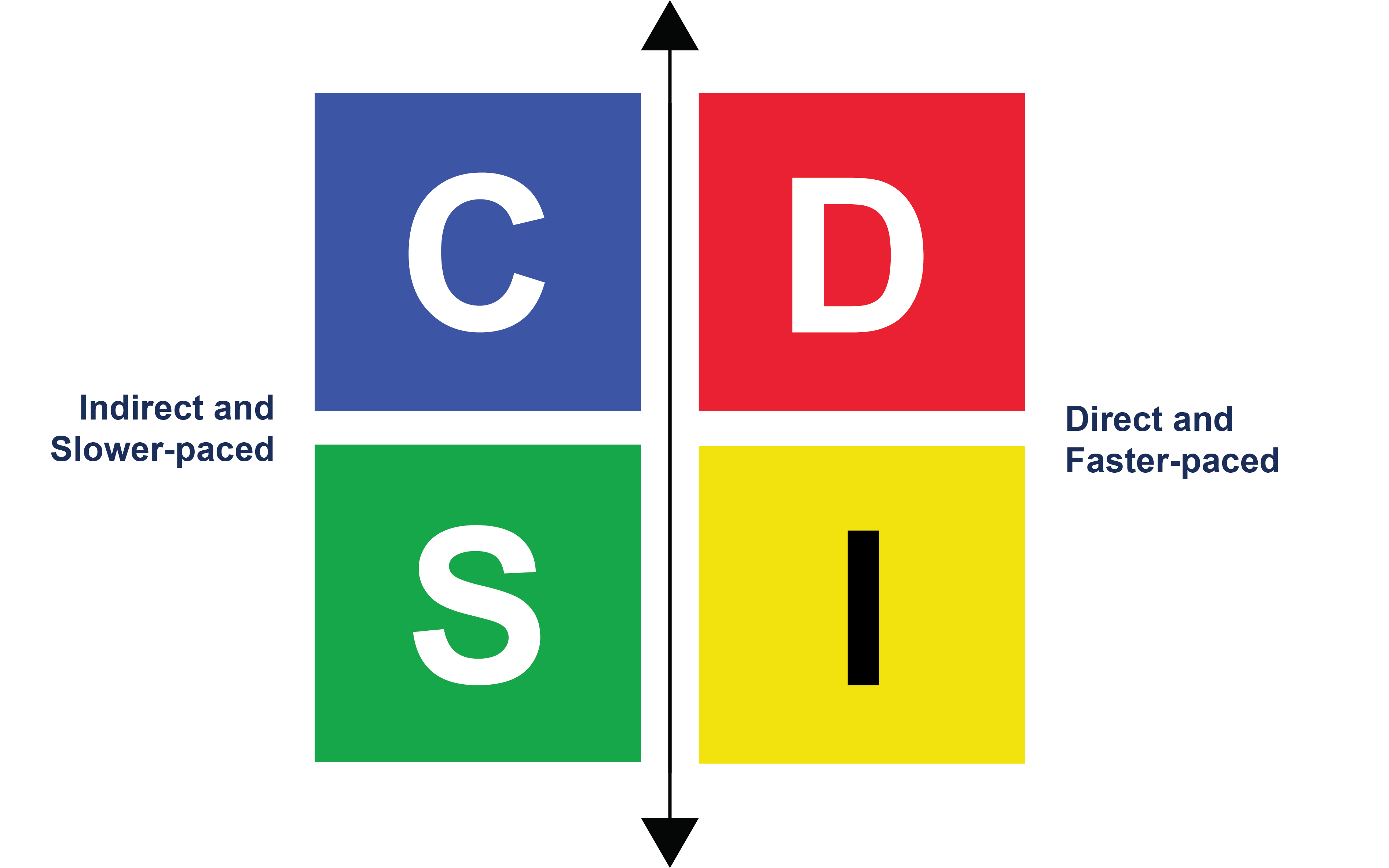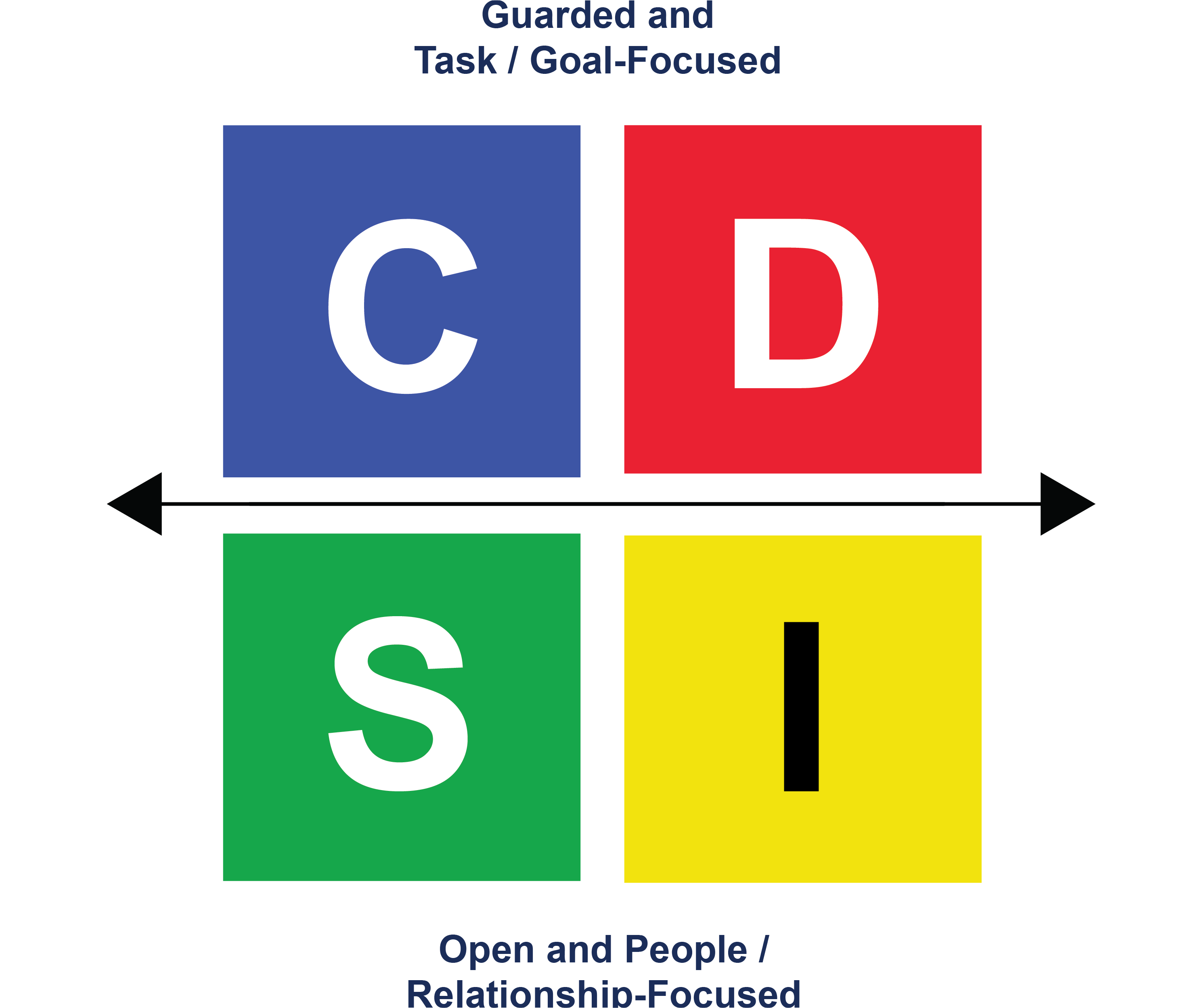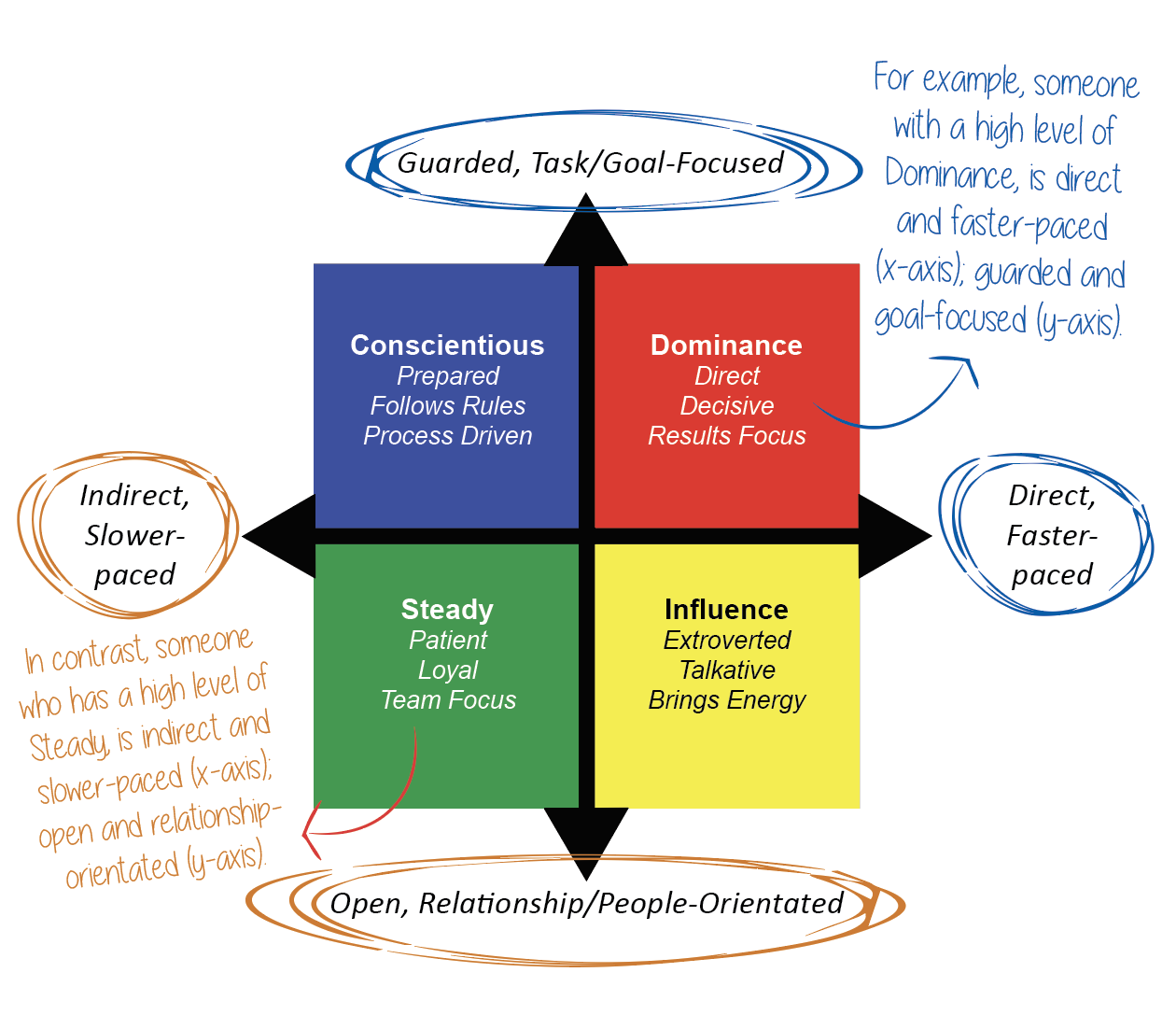Applying DISC to this Class
Now that each of you have learned about your individual DISC Profile, we'll dive deeper into the other DISC Styles to uncover the similarities and differences to continue to build your self-awareness. These videos and activities will help you to better understand your profile and apply it to this class.
Understanding the DISC Model
DISC measures the degree of Dominance, Influence, Steadiness, and Conscientious behavior. Everyone has their unique level of each behavioral style in the context of their role. The four-quadrant model explains the behavior of people with high degrees of D, I, S, and C. We will also look at how these behaviors combine as we move along.
Pace and Directness
Here’s how to identify behaviors in others based on their pace and level of directness.
Direct/Faster-Paced Behaviors
Frequently uses gestures and voice intonation to emphasize points, more likely to introduce self to others, frequent contributor in groups, less patient, expresses opinions readily, sustained eye contact.
Indirect/Slower-Paced Behaviors
Infrequent contributor in groups, reserves expression of opinions, more patient and cooperative, more likely to wait for others to introduce them, often makes qualified statements, infrequent use of gestures and little change in voice intonation.

Orientation and Openness
Look for these behaviors when working with others to determine their level of openness and focus.
Guarded/Task-Orientated Behaviors
Keeps feelings private, limited range of facial expressions, more formal and proper, avoids/minimizes physical contact, conversation stays on subject, speaks in specifics: cites facts and examples, goes with an agenda.
Open/People-Orientated Behaviors
Shows feelings and enthusiasm freely, more relaxed and warm, conversation includes digression, easy to get to know, initiates/accepts physical contact.

Watch the below video to understand more about the DISC Model

Quick Recap
- Faster-paced and more direct behavior coupled with a goal orientation and guarded manner will indicate a likely Dominance or ‘D’ Style.
- Faster-paced and more direct behavior coupled with a people orientation and open manner will indicate a likely Influence or ‘I’ Style.
- Slower-paced and less direct behavior coupled with a people orientation and open manner will indicate a likely Steady or ‘S’ Style.
- Slower-paced and less direct behavior coupled with a task orientation and guarded manner will indicate a likely Conscientious or ‘C’ Style.

ACTIVITY #1
Hand Opening
This activity uses the metaphor of ‘getting a hand to open’ to highlight some of the key principles and applications of DISC Profiling. While designed to be completed independently, use this activity to build a strong foundation of developing self-awareness and improving interpersonal skills to work more effectively with others.

ACTIVITY #2
DISC Scales and Scenarios
The DISC Scales activity uses different scenarios to highlight the scales of behavior for each of the Dominance, Influence, Steadiness, and Conscientious styles. This brings to life the different measures of each of the DISC styles that each unique student has. Maximize the benefits from this activity by reflecting on your individual responses to the different situations while also exploring a range of responses of other styles.

ACTIVITY #3
Pairing
This activity encourages your to share with someone else what your own preferences are in how you like to communicate, contribute to a team, and/or deal with conflict. Through this you can learn how people with different DISC Profiles behave, and sharpen your ability to recognize the differences and similarities you have with the person you choose to work with. Use this activity to further build your self-awareness and continue to develop your interpersonal skills to work best with others.

